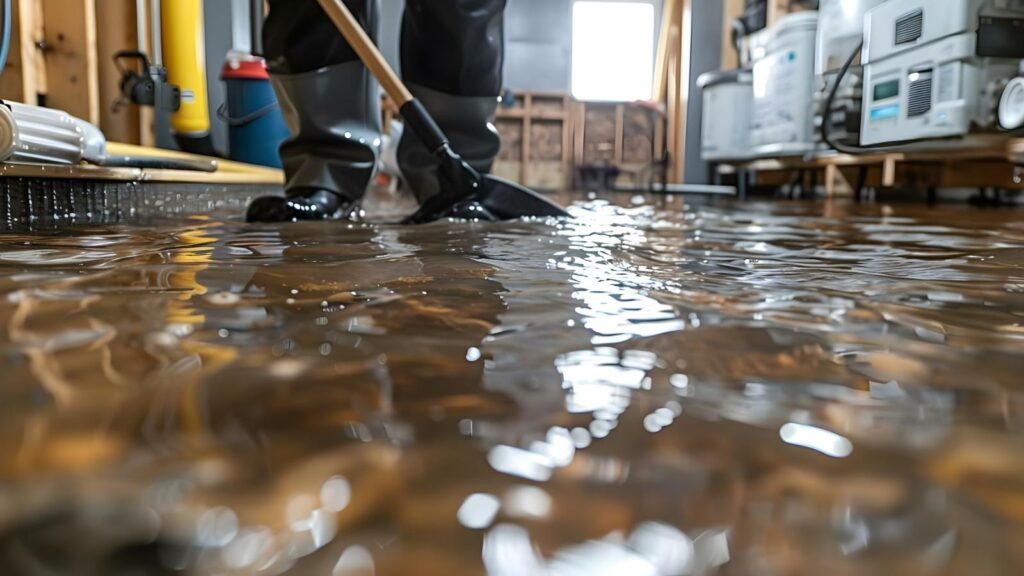
Contents
When dealing with water damage, knowing the right restoration techniques can make all the difference. You’ll need to focus on rapid water extraction, effective drying, and moisture control to prevent further issues. Understanding the structural integrity of your space is also vital. But how do you implement these strategies effectively? There are essential steps to follow that can guarantee a thorough restoration process. Let’s explore these techniques in detail.
Key Takeaways
- Quickly extract water using high-capacity pumps and wet vacuums to minimize damage in affected areas.
- Enhance drying with fans and dehumidifiers, ensuring proper airflow and temperature adjustments for faster evaporation.
- Monitor moisture levels consistently to prevent mold growth and confirm successful drying.
- Conduct structural assessments and use moisture-resistant materials during repairs to ensure long-term stability.
- Implement proactive mold prevention strategies, including regular inspections and proper ventilation to maintain air circulation.
Rapid Water Extraction Methods
When water damage occurs, prompt action is essential, as it can greatly reduce the extent of the destruction. Your first step in flood response involves rapid water extraction methods, which are key for minimizing damage.
Start by gathering emergency equipment, including high-capacity pumps and wet vacuums, to remove standing water quickly. These tools help you tackle large volumes of water effectively, preventing further structural issues.
Assess the affected areas thoroughly to identify the most severely impacted spots. Focus your extraction efforts there, ensuring you cover every inch. If necessary, consider using specialized equipment like submersible pumps for deeper water levels.
After extraction, it’s important to monitor moisture levels, as residual dampness can lead to mold growth.
Effective Drying Techniques
While rapid water extraction is essential, effective drying techniques play an important role in preventing long-term damage and mold growth.
You’ll want to focus on airflow management as a primary strategy. By using fans and dehumidifiers strategically, you can enhance air circulation, which accelerates evaporation and helps maintain ideal humidity levels.
Incorporating thermal imaging can greatly boost your drying efforts. This technology allows you to detect moisture hidden behind walls and beneath floors, ensuring you address all wet areas effectively.
Identifying these spots quickly prevents mold spores from taking hold.
Additionally, consider adjusting the temperature in the affected space; warmer air holds more moisture, aiding in faster drying.
Utilizing Dehumidifiers for Moisture Control
Effective drying techniques naturally lead to the need for moisture control, and dehumidifiers are an essential tool in this process.
To effectively utilize a dehumidifier, consider the following aspects:
Dehumidifier sizing: Match the unit’s capacity to the affected area for peak performance.
Humidity monitoring: Regularly check humidity levels to guarantee they stay within a safe range.
Placement: Position the dehumidifier in the most affected area for maximum moisture extraction.
Maintenance: Clean and maintain your unit to ensure it operates efficiently over time.
Mold Prevention Strategies
To prevent mold growth after water damage, it’s crucial to implement effective strategies that minimize moisture and promote airflow. Start by conducting proactive inspections of the affected areas, verifying that any hidden water is addressed promptly. Utilize mold-resistant materials for repairs, such as drywall and paints, which can considerably reduce the risk of mold proliferation.
Here’s a quick reference table for effective mold prevention:
| Strategy | Description | Benefits |
|---|---|---|
| Proactive Inspections | Regularly check for leaks and moisture | Early detection of issues |
| Mold-Resistant Materials | Use materials that resist mold growth | Long-term protection |
| Promote Airflow | Confirm proper ventilation in areas prone to dampness | Reduces moisture accumulation |
Structural Repair and Restoration
After water damage occurs, addressing structural repair and restoration promptly is vital for maintaining the integrity of your property.
Ignoring these issues can lead to severe long-term consequences.
Here are important steps to guarantee effective repair:
Assess foundation integrity: Inspect for cracks or shifts that could compromise stability.
Choose the right materials: Opt for moisture-resistant and durable options to prevent future damage.
Reinforce weakened structures: Use steel supports or additional framing where necessary.
Implement proper drainage: Verify water flows away from your property to prevent recurring issues.
Contents Cleaning and Salvage
When dealing with water damage, you need to start by evaluating the condition of your belongings to determine what can be saved.
Effective cleaning techniques, tailored to the type of materials affected, are essential for restoring items to their pre-damage state.
Understanding these processes can greatly impact the salvageability of your contents.
Assessing Damaged Items
Although evaluating damaged items might seem overwhelming, it’s an essential step in the water damage restoration process that can save valuable belongings.
Begin with a systematic item evaluation, focusing on damage classification to determine what can be salvaged.
Categorize items: Separate belongings into groups like salvageable, repairable, and unsalvageable.
Inspect materials: Consider the material type; some are more resilient to water damage than others.
Take inventory: Document each item’s condition and potential for restoration.
Consult professionals: Reach out to restoration experts for advice on sensitive items.
Effective Cleaning Techniques
Effective cleaning techniques are essential in the aftermath of water damage, as they can greatly impact the restoration of your belongings.
Start by removing debris and excess water, then focus on cleaning surfaces with eco-friendly products. These cleaners not only protect the environment but also guarantee the safety of your family.
For fabrics and upholstery, consider using specialized cleaning solutions that penetrate deeply to eliminate mold and mildew.
After cleaning, prioritize surface sanitization to avoid lingering pathogens. Use a combination of steam cleaning and UV light for effective treatment.
Remember to air out items and allow sufficient drying time to prevent further damage.
With these techniques, you can effectively salvage and restore your cherished belongings.
Professional Water Damage Assessment and Monitoring
To guarantee thorough water damage restoration, a professional assessment is essential for identifying the extent of the damage and potential hazards.
You’ll benefit from utilizing advanced assessment tools that help evaluate water quality and structural integrity. This process assures you have an accurate understanding of the situation and can prioritize restoration efforts effectively.
Moisture meters: Measure moisture levels in walls and floors to detect hidden water damage.
Thermal imaging cameras: Identify areas of moisture that aren’t visible to the naked eye.
Air quality testing: Check for harmful mold spores that may compromise health.
Water sampling: Analyze water quality to determine any contaminants present.
Summary
In the intricate dance of water damage restoration, each technique plays a crucial role in reclaiming your space. By harnessing rapid extraction, effective drying, and diligent moisture control, you can stave off lurking mold and guarantee structural integrity. Think of your home as a fortress; with careful assessment and monitoring, you’re not just restoring, but fortifying against future threats. Embrace these essential strategies, and watch as your environment transforms from chaos back to comfort.
Recent Posts
Act Fast: The Hidden Dangers of Water Leaks and the Urgency of Drying Out Your Home
Introduction: A water leak in your home can be more than just an inconvenience; it
